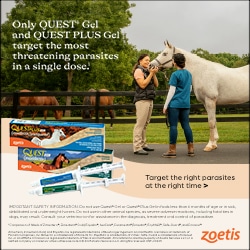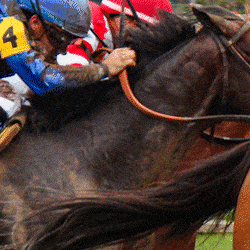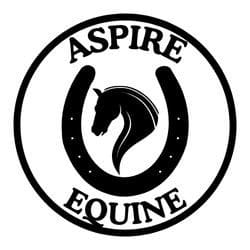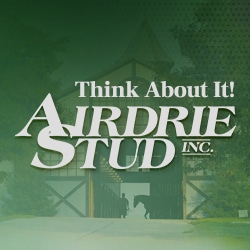Many factors can contribute to a weak topline in the recently-retired Thoroughbred.
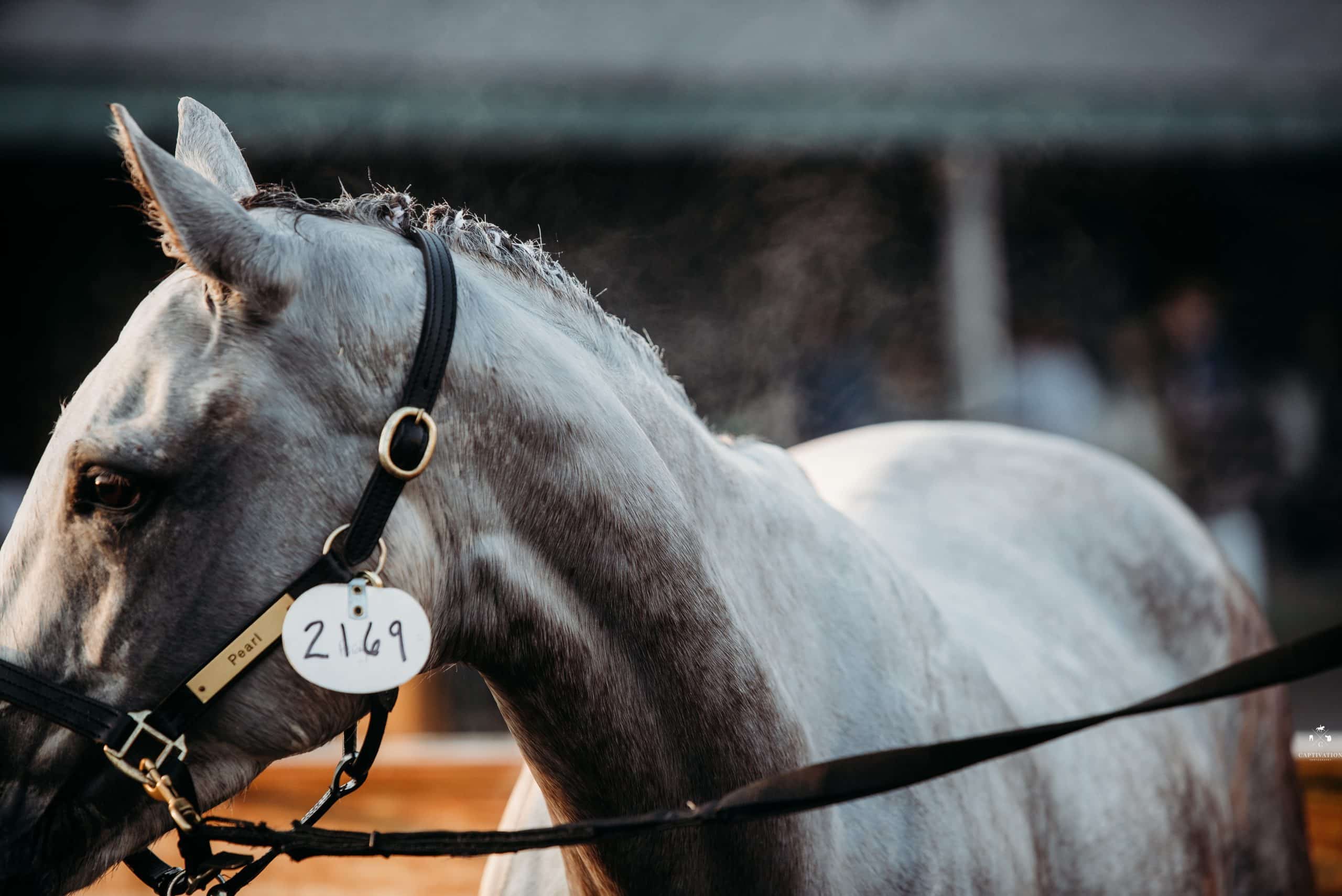
Captivation Photography
Many high performance Thoroughbreds present with weak top lines. A weak top line is characterized by little or no fat covering on either side of the spinal processes and poor muscle definition along the spine from the withers back through the coupling and hip. Performance horses require a strong back in order to properly balance themselves and power through movements required for racing, galloping, jumping and dressage. An individual horse with a weak top line is not expected to perform to the best of their ability. While it is true that some top level horses have weak top lines, one has to wonder how much better they could perform if this problem were solved and they had a strong back with which to compete.
The causes of weak top lines in performance horses are many and are often inter-related. The focus of improving the top line of an individual horse should be to determine the primary cause. Often, improving the top line of an individual horse is much more involved than simply trying to get more groceries into them.
Common factors that contribute to a weak top line in performance horses include:
- Gastric ulcers
- Intestinal inflammation
- Chronic pain
- Sore back
- Subluxation of vertebrae
- Inadequate nutrition
Most retired racehorses will present with gastric ulcers, intestinal inflammation or both. Intestinal inflammation is often overlooked due to the fact that it is not easily recognizable. Intestinal inflammation can have significant negative effects on the horse’s immune system and ability to assimilate nutrients. When the comment is made that a horse is being fed large amounts of feed but he/she fails to gain weight or improve top line, intestinal inflammation should be suspected.
Intestinal inflammation often presents concurrent with a sore back and tight hamstrings. In fact, in my experience one is quite capable of causing the other. Therefore, when I recommend treatment for one condition I almost always recommend treatment for the other at the same time. When a horse is suffering from gastric ulcers and/or intestinal inflammation he cannot adequately digest and assimilate nutrients. Additionally, metabolic hormone profiles (cortisol, insulin, growth hormone) are adversely affected resulting in poor utilization of energy and protein substrates. The net result is an inability to increase muscle protein or effectively metabolize energy sources. A horse in such a condition will not be able to build muscle or lay down fat on their top line resulting in a thin horse presenting with weak top line.
Chronic pain in performance horses, especially retired racehorses is common. Chronic pain alters metabolic hormone profiles, especially cortisol, in a manner that not only has negative effects on nutrient utilization, but may actually increase muscle breakdown. A horse in a chronic state of breaking down muscle will almost always have a weak top line. Causes of chronic pain in retired racehorses include micro fractures, tendon and/or ligament injuries, osteoarthritis, strained muscles, spinal subluxation(s) and hoof pain caused by navicular syndrome, laminitis or sesamoiditis. A horse suffering from chronic pain will sub-consciously adjust their way of going and use of muscles in an attempt to find relief from whatever the cause of pain happens to be. This compensatory action will strengthen some muscles and weaken others resulting in an unbalanced horse and one that often presents with a weak top line.
It is often a good idea to have a horse presenting with a weak top line evaluated by a veterinarian or someone with expertise in locating sources of chronic pain. Keep in mind that a horse suffering from chronic pain may not present with any visible signs of lameness making it extremely difficult to isolate the source of pain without the use of specialized diagnostic tools and expertise. Horses that suffer from chronic pain almost always “blossom” in terms of attitude and body condition once their pain is alleviated. Over the years, I have consulted with numerous horses that the owner/trainer was about to give up on that experienced a complete turnaround once their source of pain was alleviated. Many of these horses went on to be star performers. Helping these horses become the best they can be is one of the most rewarding experiences for anyone.
Subluxation of spinal vertebrae is a common finding in horses that present with a weak top line. Spinal vertebrae that are out of alignment interfere with normal muscle innervations. Muscles that lack adequate innervation cannot function normally resulting in atrophy. Interruption of normal muscular innervation will also affect the function of other organ systems such as the digestive system and immune system as mentioned previously. Physical therapies such as aquatic treadmills, swimming, TheraPlate and massage combined with proper chiropractic adjustment can be extremely effective in these cases. Not all of these forms of therapy are available in local geographic locations, but the utilization of what is available may help affected horses significantly.
Nutrition can play a significant role in helping horses strengthen a weak top line. For discussion purposes, let us assume that we are presented with a retired Thoroughbred race horse exhibiting a weak top line and we really have no idea at this point in time what all the problems are that came packaged with this individual; what do we do?
The first thing we do is assume this individual has gastric ulcers and/or intestinal inflammation (we have an 80% chance of being correct in this regard). To improve intestinal function in such cases I recommend feeds that will buffer the digestive system and support healthy fermentation in the horse’s large intestine, in combination with omeprazol to heal and prevent gastric ulcers. I am also going to assume that there is some degree of nerve impairment so I am going to recommend vitamin E supplementation. Research has proven that the synergistic effect of combining Vitamin E and Vitamin C results in a much more powerful response in a shorter period of time). In severe cases we might also consider the inclusion of amino acids known to improve muscle protein synthesis such as L-carnitine, L-leucine and beta-alanine. These amino acids can be found in high concentration in whey protein or supplemental products that include them individually.
It is also imperative that high quality forage sources be provided to horses exhibiting weak top lines. Four to seven pounds of alfalfa hay or cubes per day can be extremely beneficial to horses in need of extra condition. Utilizing a feed with 10% fat or more will provide concentrated calories without making the horse too hyper, especially if it is a fiber based feed such as Triple Crown Senior.
In conclusion, weak top lines in performance horses can be a multi-faceted problem. Utilizing a systematic approach to the problem that either rules out or addresses each issue beginning with the most prevalent can result in successfully correcting this common condition. Your horse’s attitude and performance as well as your enjoyment will increase by doing so.






